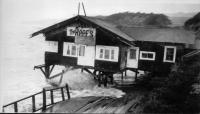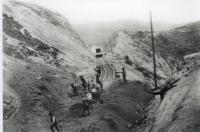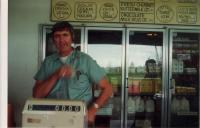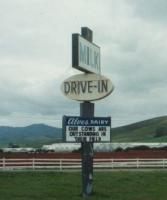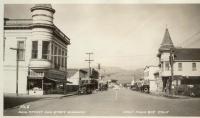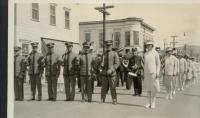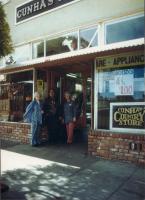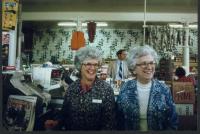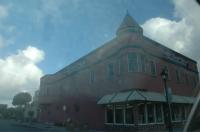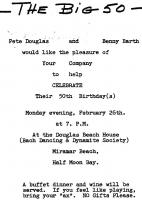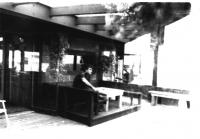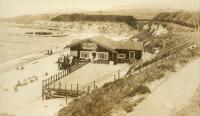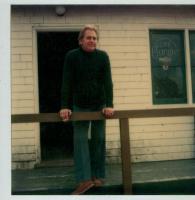Let me explain: A long time ago I decided to do a story about wrinkles, you know, about how obsessed women are with them and the lengths they will go to eliminate them–that was the idea– but my story was going to have a lot of humor. My story was going to be very funny.
Wrinkles are funny, right?
I took the idea to the San Jose Mercury News’ magazine–which was very hot at the time. The editor and his magazine were widely admired, and I convinced the editor to let me write this “laugh your head off” article about wrinkles for his great magazine.
I worked hard on the piece–I wanted it to be everything I promised it would be–there was the well known San Mateo County dermatologist who told me women should stick Scotch tape on their faces in order to prevent laugh lines and crows feet from developing. Stunt them before they grow– especially when talking on the phone, he said, women should wear Scotch tape in strategic places.
I interviewed a Berkeley author who had just published a book about my subject and then died in a freak car accident soon after. Besides the usual advertising promises from the cosmetic industry, I collected unusual and ancient rememdies for wrinkles like special, smooth rocks encased in what looked like a lovely jewelry box.
I also interviewed a couple of Coastsiders, one of them was Pete Douglas, the famous Miramarian ( one who lives in Miramar) and runs the world class jazz house, Bach Dancing & Dynamite Society. Anyone who knows Douglas knows he is opinionated, has a wry sense of humor–and most importantly for me, who was writing a humorous story about wrinkles, Pete has a craggy face. I thought: this man knows facial lines and from his vantage point at the Bach he is a great observer of life.
But the interview with Pete turned out to be far more serious than I ever thought he’d be. Very understanding and sympathetic.
To the bitter end, I believed my wrinkles piece was hilarious and didn’t get the hint that things were going badly–even when I read excerpts to my friends and didn’t get laughs. Not one. The truth was, the story flopped, and in the end, the magazine gave me a “kill fee” for it. They paid me to go away.
In the next post, I’ll write-up the interview with Pete.
—–
okay, I have finally found my story called “Wrinkles,” the piece I sent to the San Jose Mercury News magazine when it was hot, and that would be in the mid-1980s.Of course, what I wrote did not jive with what the magazine wanted. I was paid a non-run fee, which I didn’t event want. I mean, if my work isn’t good enough, should I take a fee for it, anyway? It wasn’t my style; I still feel guilty about it.
Actually, I now see that this is not the article but a treatment for a documentary type show. At one time that was a dream but it died. So here is the treatment for “Wrinkles.” I know it’s crummy, but it is what it is.
Introduction
Wrinkles
The wrinkle is being attacked. By whom? The baby boomers facing wrinklehood. Everywhere there’s talk and concern. And psychological fallout, especially among women, the primary target of the billion dollar beauty industry.
Wrinkles make a man look distinguished while women just age.
“…You all know that gray hair and wrinkles give a man authority, dignity and importance and give a woman reason to rush out for hair dye and a face lift….” said “keynote” speaker Geraldine Ferraro at the 1983 New York State Convention on Midlife and Older Women.
But wrinkles affect everyone. Even movie stars get wrinkles; even men get eye tucks.
The overall reaction is how to get rid of, minimize, or disguise wrinkles. So, bottle after bottle, jar after jar of anti-wrinkle potions line cosmetic counters. Their names run from the exotic to clinical….Sperm Whale Oil, Zyderm Collagen, Bilberry Juice, Goodbye Wrinkles, and Formula 405.
Collagen injections, laser treatments, face lifts and acupuncture are the heavy laser treatments. New prescription topical medicines such as Efudex and Retin-A promise to resurface or “grow new skin” –although there’s the price of discomfort to pay. Books tell how to eliminate wrinkles with special facial massages–and even hot spoons to iron out wrinkles. (Ouch). And if all else fails, psychiatrist can held clients cope with the inevitable.
But there’s another side to this story. And, that is, up-lifting the wrinkle’s bad reputation through their beauty, and the forgotten art of face reading which determines a person’s fate from facial lines.
“Wrinkles” is a 30=minute show, which shows all sides of the lowly wrinkle–the lotions and revolutionary treatments, the fears and the humor of living in a wrinkle-less society.
Wrinkles: The Treatment
[I don’t know what they do today; but in the 1980s a writer had to submit what was called a treatment, which was the visual way the show would be filmed. Does that make sense? I tried but it’s a tough business and I couldn’t get it right.]
We open with an extreme close-up shot of wrinkles. They look like a tributary of rivers or cracks in a parched desert. The narrator advices viewers that what they’re seeing is not what it seems to be. Maybe it’s the Brazilian jungle, maybe it’s the ancient seas…maybe….
Pulling back, we see a man in his 40s staring in the mirror at his face. He’s closely examining his wrinkles, one by one. He talks about the history of each line. Some stories are funny; some sad. He talks about a broken heart, a job as a lifeguard and a dangerous expedition he went on into the Himalayas.
Fade into a shot of a woman looking at her wrinkles in the mirror. She,too, has stories for each line. The baby, the problems at work, divorce, and being left without funds to support herself and child.
Wrinkles have lives of their own. Their own stories.
We move to shots of crowds of people with wrinkles: every conceivable shape a wrinkle can take, radiating from the eyes, baby lines, and older ones that follow their own trails. The narrator is being pro-wrinkle, showing us beautiful and artistic lines.
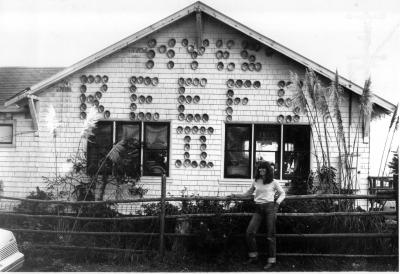
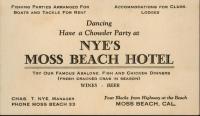
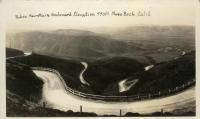 The way to Moss Beach via the Pedro Mountain Road
The way to Moss Beach via the Pedro Mountain Road
